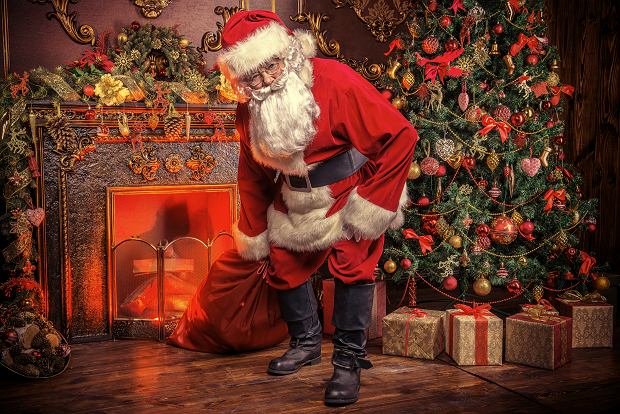
Different Country, Different Santa
Different Country, Different Santa
What would Christmas be if not for Santa and his helpers? Where would all the magic of Christmas be? Even now, when I am much older my heart warms up when I see Santa at the Christmas fair around here in the USA.
Did you know that each country has its version of how Santa looks and what it does? I was surprised to learn that some countries have more than one Santa… Can you believe that?
How did Santa’s tradition begin?
In Europe, the story goes that St. Nicholas was a bishop in the 3rd century in Turkey. He was helping the poor and sick travelling the countryside and offering them his help and good word. December 6th is the anniversary of St. Nicholas’s death. Since the Renaissance, he was the most popular Saint in Europe.
Of course, Santa was not a tradition for Native Americans, but the Immigrants brought him to America by the end of the 18th century. It started with a gathering of Dutch families to celebrate the anniversary of St. Nicholas’s death. Sinter Klaas from Dutch means Saint Nicholas. After some time passed, his name evolved into Santa Claus.
Because of the generosity of St. Nicholas, present giving and helping those in need became a tradition since the 19th century in the USA and around the globe, there are many donations around Christmas. People make sure that families in need are provided with a meal and necessary items.
3 Santas in Slovenia
The kids in Slovenia are so lucky! They have three Santas (Three Good Men) to write letters to and receive gifts from! Svetli Miklavž, who visits on December 5th is accompanied by angels. Slovenians organize processions for him every year that day. Good kids leave their stockings or shoes on this night and Santa will bring them small presents. Bad kids will receive something scary. On Christmas Eve Božicek will visit the families, and on New Year’s Eve Dedek Mraz (meaning Grandfather Frost). You can see the last one riding on a carriage around Christmas.
13 Santas in Iceland
Iceland is the luckiest country in Europe! It has 13 Santas (Yule Lads) over 13 nights before Christmas. They come from Icelandic folklore that is still very alive nowadays amongst Icelandic families. Each Yule Lad is doing some sort of mischief. The kids place their shoes on the windowsill expecting to get a present. Bad-behaved kids will get a potato. Good kids will get a gift. In return for their efforts, the Yule Lads receive a little treat from the families they visit. This will be usually Laufabrauđ, meaning Leaf Bread, which is a thin, crispy flatbread made around Christmas.
Female Giftbringer, Santa and Krampus in Austria
Santa is not bringing the presents in Austria but the Christkind. She comes in the form of an angel with white wings and a halo over her head. She brings gifts only for good kids on Christmas Eve.
During Advent friendly St. Nicholas and Krampus (frightening witch) might knock at your door to check whether the children were good- or bad-behaved. The kids fear Krampus. The well-behaved kids will receive sweets, peanuts, and tangerines, while the bad-behaved ones, will get a word of warning.
Sinterklaas in the Netherlands
In the Netherlands, Santa looks like St. Nicholas. He wears a tall red bishop’s hat with a golden cross and a red cloak. He carries a long golden staff. He rides a white horse. He holds a book where he writes addresses and kids’ names and keeps track of whether they behave well or not.
He travels from Madrid to the Netherlands and Belgium to celebrate his birthday on December 5th. He knocks on doors and brings presents and candy only for good boys and girls. He is accompanied by many Petes, his helpers. They will leave the candy and presents in each house as Santa is old and cannot go through the chimney anymore. Santa and Petes travel by steamboat. If there were no river or water nearby, they would choose any transport mode with a steam engine. They will arrive on the 3rd or 4th week of November followed by the local parade.
Merry Christmas Akademos Students! We wish you all the best in the coming Year 2024!
Vocabulary
bishop – a senior member of the Christian clergy, usually in charge of a diocese and empowered to confer orders (biskup)
Native Americans – the descendants of the original inhabitants of North America and South America before the arrival of white settlers from Europe (rdzenni Amerykanie)
stockings – a close-fitting covering for the foot usually knitted of wool (skarpety)
carriage – a four-wheeled passenger vehicle pulled by horses (wóz)
mischief – playful misbehavior or troublemaking (psota)
windowsill – a ledge or sill forming the bottom part of a window (parapet)
flatbread – a type of flat thin bread made without yeast (podpłomyk)
staff – stick, symbol of authority (laska)
steamboat – a boat that is propelled by a steam engine used widely on rivers in the 19th century (parowiec)